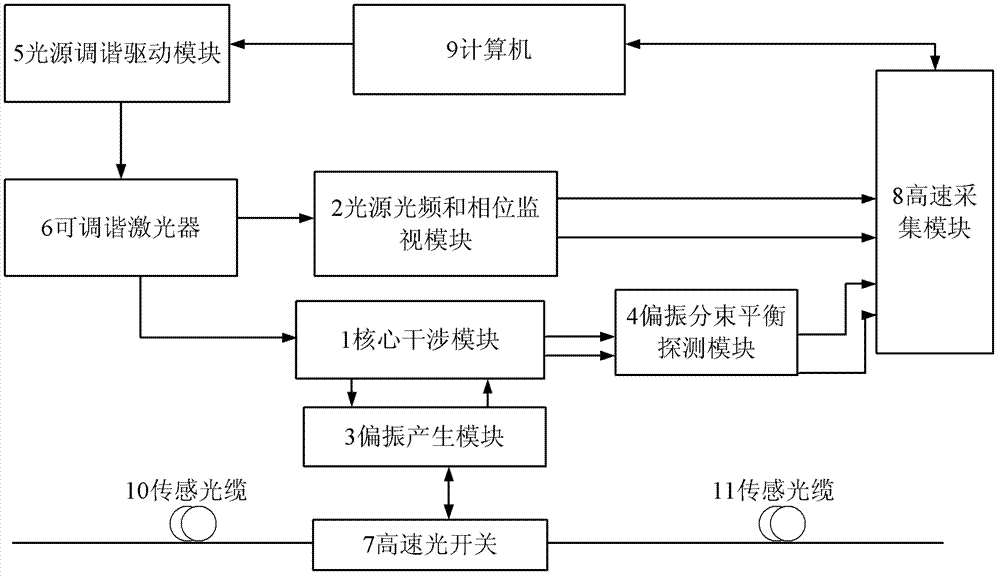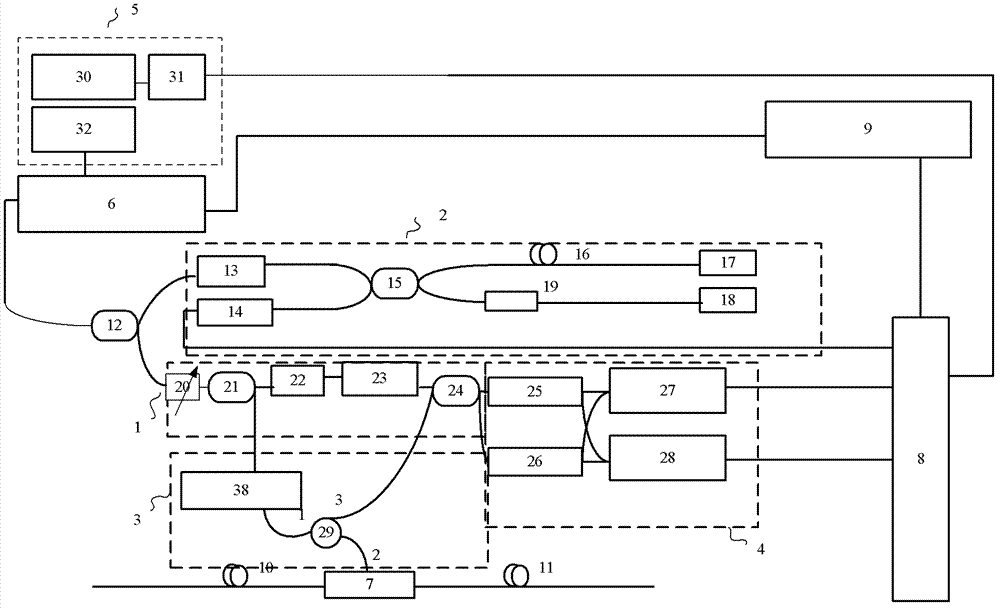Polarization sensitive distributive optical frequency domain reflection disturbance sensor and demodulation method
An optical frequency domain reflection and sensing device technology, applied in the field of optical fiber sensing, can solve the problems of low spatial resolution, short test distance, single point separation, etc., and achieve the effect of high sensitivity and high signal-to-noise ratio
- Summary
- Abstract
- Description
- Claims
- Application Information
AI Technical Summary
Problems solved by technology
Method used
Image
Examples
Embodiment 1
[0055] Example 1: Polarization-sensitive distributed optical frequency domain reflection disturbance sensing device
[0056] Such as figure 1 As shown, the basic structure of the core interference module 1 is a Mach-Zehnder (Mach Zehnder) interferometer structure, which constitutes an optical heterodyne interference structure; the light source optical frequency and phase monitoring module 2, which mainly collects the real-time optical frequency and phase of the laser , to perform nonlinear scanning and phase noise compensation on the signal of the core interference module; the polarization generation module 3 and the polarization beam splitting balance detection module 4 realize the extraction of polarization information in the sensing optical cable; the light source tuning drive module 5 and the tunable laser 6 Provide high-speed and narrow-linewidth laser light sources with linear scanning wavelengths for polarization-sensitive distributed optical frequency domain reflecti...
Embodiment 2
[0071] Example 2: Polarization-sensitive distributed optical frequency domain reflection disturbance sensing method
[0072] Its specific technical methods and algorithms include several steps:
[0073] The first step, the real-time phase optical frequency acquisition of the laser, performs Hilbert transformation or trigonometric function transformation and time-frequency domain transformation on the signal collected by the light source optical frequency and phase monitoring module to obtain the optical frequency or phase of the laser at each time point;
[0074] The second step is to use the optical frequency or phase signal of the laser collected in real time in the first step, and use the non-uniform fast Fourier transform or compensation interpolation algorithm to perform phase compensation on the two signals of the core interference module including the polarization eigenstate. , to suppress the impact of optical frequency nonlinearity and light source phase noise on th...
PUM
 Login to View More
Login to View More Abstract
Description
Claims
Application Information
 Login to View More
Login to View More - R&D
- Intellectual Property
- Life Sciences
- Materials
- Tech Scout
- Unparalleled Data Quality
- Higher Quality Content
- 60% Fewer Hallucinations
Browse by: Latest US Patents, China's latest patents, Technical Efficacy Thesaurus, Application Domain, Technology Topic, Popular Technical Reports.
© 2025 PatSnap. All rights reserved.Legal|Privacy policy|Modern Slavery Act Transparency Statement|Sitemap|About US| Contact US: help@patsnap.com



